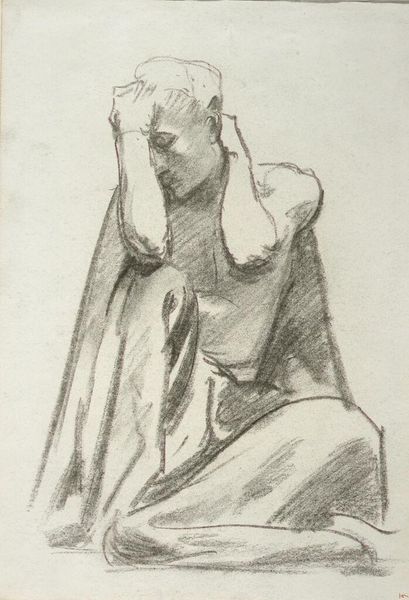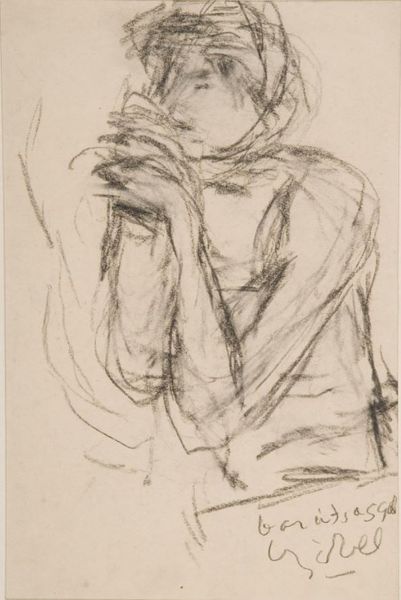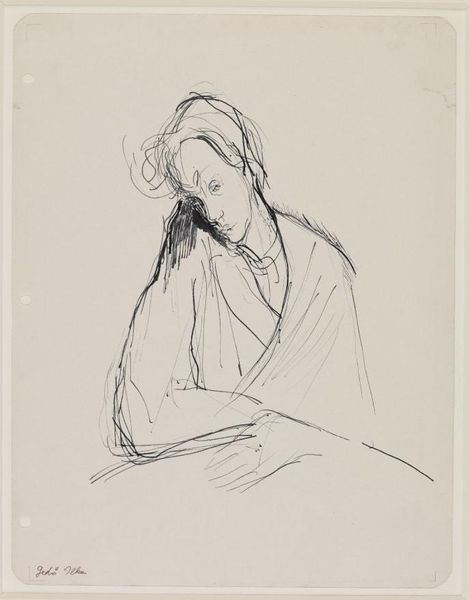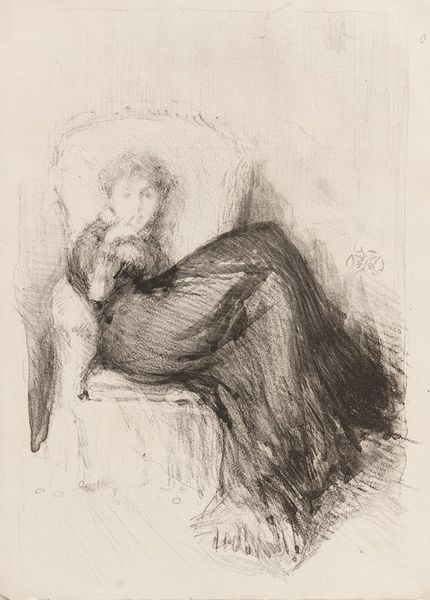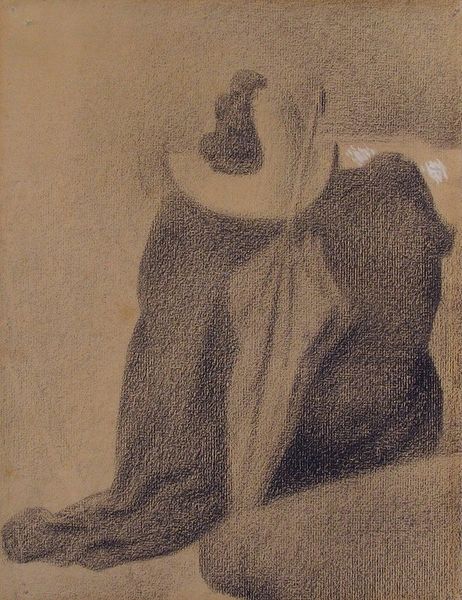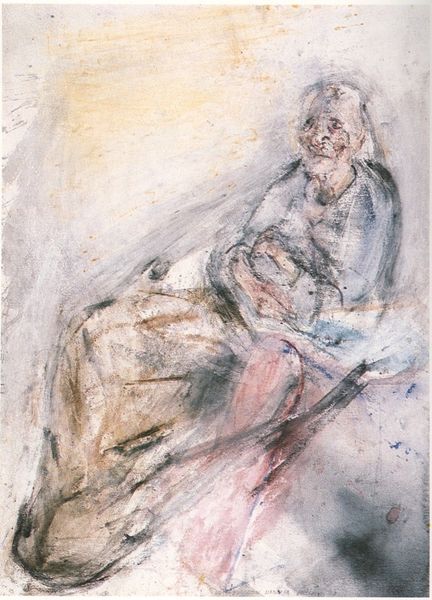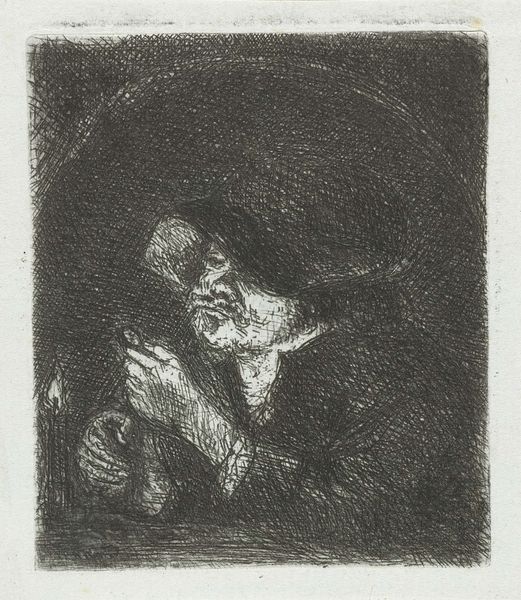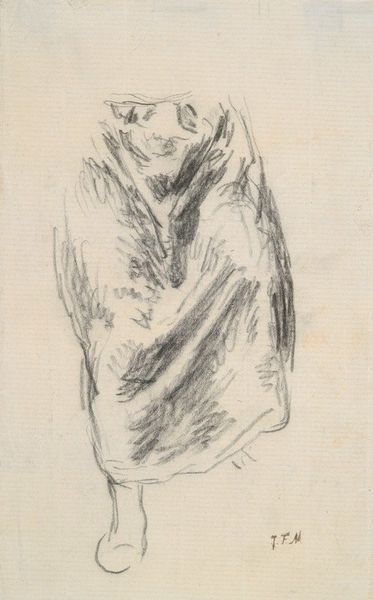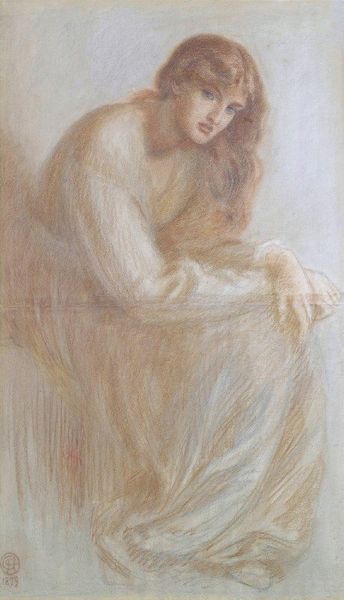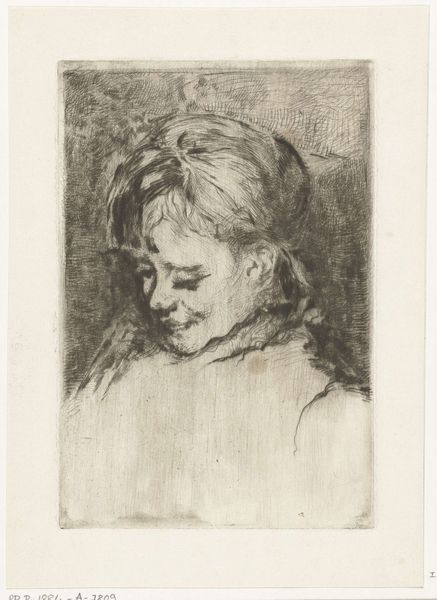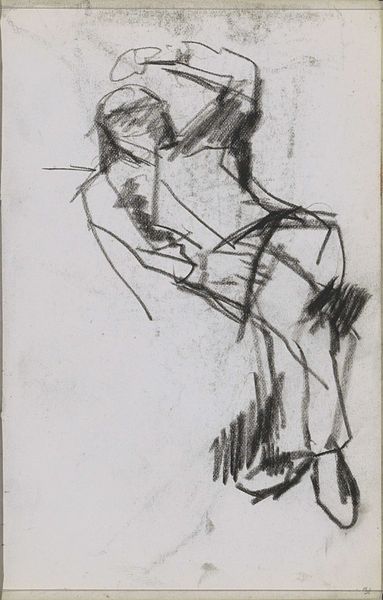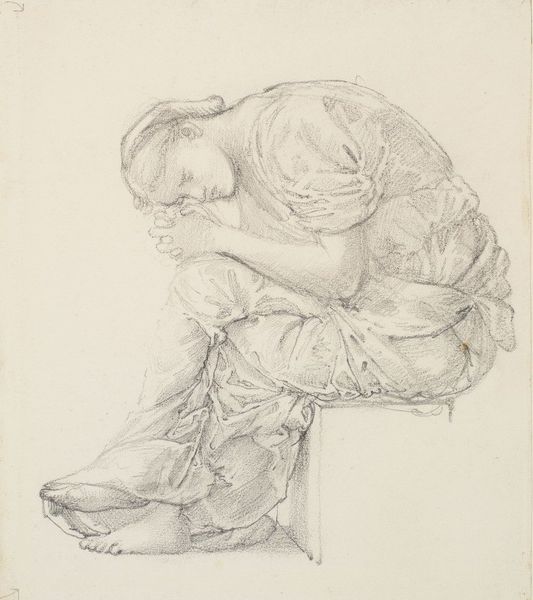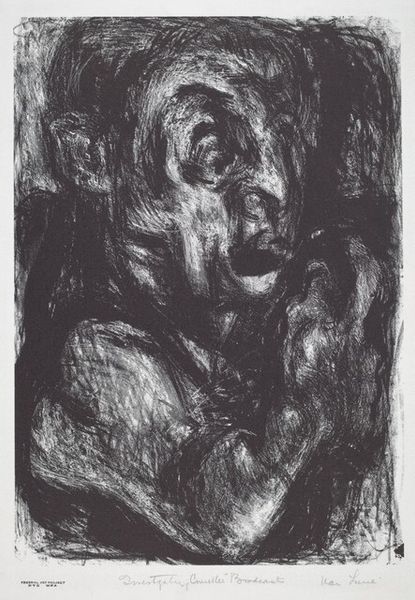
drawing, graphite, charcoal
#
portrait
#
drawing
#
charcoal drawing
#
expressionism
#
graphite
#
charcoal
#
charcoal
Dimensions: 14 1/8 x 11 in. (35.88 x 27.94 cm) (irregular)
Copyright: No Copyright - United States
Curator: Here we have Käthe Kollwitz's "Mother with Dead Child," created around 1911. It’s a compelling work rendered in charcoal and graphite. What's your initial response to it? Editor: The stark contrast immediately hits you. There’s a density to the shading that seems to physically weigh down the figures, embodying an intense feeling of grief and exhaustion. It feels raw. Curator: Indeed. Kollwitz's process often involved layering charcoal to create depth and evoke texture. You see this in the mother's dark cloak, a shroud of sorrow made material. The expressiveness isn't just in the subject but born directly from the way she worked the charcoal. How does that interplay of subject and process speak to the socio-political context for you? Editor: Considering Kollwitz’s own life – losing her son in World War I – it’s impossible not to see this as a reflection on the widespread loss and trauma of that era. The material darkness of the charcoal embodies the darkness of war and its impact on women and families. The work is, therefore, more than just a drawing; it’s a testament to the sociopolitical consequences of conflict viewed through an intimate, feminist lens. Her work consistently confronted social inequality and human suffering. Curator: Absolutely, her position as a working-class woman undoubtedly informed her choice of subject matter. Kollwitz’s consistent return to charcoal and printmaking -- reproducible, relatively affordable mediums – also speaks to her social aims of making art accessible and of using the medium as a means of wider activism. Editor: It’s a powerful and heartbreaking statement. Knowing the material limitations she faced, and seeing the intensity of emotion she could convey, I feel like it elevates everyday struggles, forcing us to acknowledge these intersectional, feminist, and anti-war perspectives from a period of extreme oppression. Curator: I concur. The physical labor involved in creating this poignant piece seems to mirror the emotional labor it depicts, thus collapsing high art distinctions of the period. Editor: Yes. Thank you, looking at it that way has given me a new perspective on how artwork from social struggle reflects its social means.
Comments
minneapolisinstituteofart almost 2 years ago
⋮
In 1910 Kollwitz began exploring the theme of motherhood and death in a series of heart-rending studies of a woman and her dead child. The final image, an etching with the title Death, Woman and Child from 1911, depicts a woman desperately holding on to her lifeless child as the bony arm of Death comes to snatch him away. In this preparatory drawing, Kollwitz leaves out the skeletal hand and the struggle for the child's body to focus instead on the woman's loving embrace of her child. Kollwitz's ability to express extremes of emotion and pathos is clear in this powerful drawing, which makes allusions to a Christian Piéta, a devotional image of the dead Christ on Mary's lap.
Join the conversation
Join millions of artists and users on Artera today and experience the ultimate creative platform.

